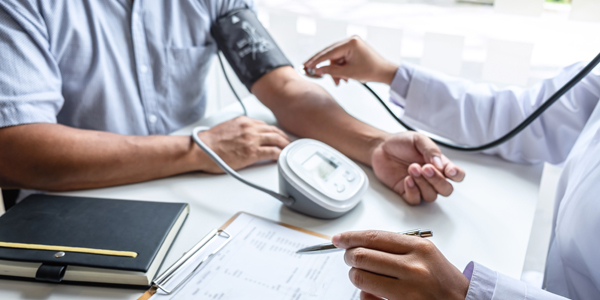
January 27, 2022 | Lynn Schear
A rising demand for medical equipment.
Supply chain disruption created by the worldwide COVID–19 pandemic is just one of the factors leading to unprecedented demand for medical supplies and equipment in the healthcare sector.
What began as a shortage of masks, gloves and ventilators has now spread into a scarcity of equipment like exam tables and IV poles for hospitals, as well as home health care equipment such as CPAP machines used to treat sleep apnea.
The United States' $200 billion medical device market is projected to grow more than 5% annually through 2028, according to CMS projections. Healthcare organizations that have struggled financially during the first years of the coronavirus pandemic are now being forced to upgrade aging equipment as they return to more elective procedures.
"While COVID–19 has proven impossible to predict, we do know that routine and elective surgeries are happening and in–place equipment isn’t getting any younger," healthcare industry expert John Sparta writes in the Daily Monitor. "As supply chain constraints ease and the economy normalizes, we expect to see an uptick in customers looking to replace older healthcare equipment by financing new assets."
But as shipping containers back up at ports on both coasts, a more flexible and transparent supply chain is a top priority for healthcare buying organizations, opening opportunities for smaller domestic manufacturers.
What’s in demand and why
COVID–19 highlighted the need for hospitals to create new spaces quickly, for increased intensive care beds and infection control. Instead of costly, long–term construction projects, movable modular structures are transforming how healthcare institutions respond to public health crises by allowing them to quickly adapt their environments with walls, doorways and ceilings designed to be moved.
Before 2020, China supplied more than half of America’s personal protective equipment, a number that only increased as the coronavirus took hold. But tariffs and political tensions made getting enough medical–grade masks impossible for months. Some domestic suppliers who pivoted to N95 production still saw their prices undercut after China nationalized its mask manufacturing sector.
However, the Department of Health and Human Services is developing a contract designed to increase U.S. manufacturing of N95 and KN95 masks to keep healthcare workers protected if COVID–19 continues to spread. As of now, there are 737 million U.S.–made N95 masks in the U.S. Strategic National Stockpile, according to testimony from HHS officials earlier this month.
In terms of more durable equipment, hospitals are looking to make purchases that will allow them to care for COVID–19 patients as well as those with other common acute needs:
- Disinfectant and sterilization equipment
- Intubation supplies and ventilators
- Infusion and injectable supplies
- Dialysis consumables
- Wound care supplies
- Radiology equipment and supplies
- Suction units
- Patient monitors and pulse oximeters
The home healthcare factor
Rather than pay for long–term care, many people in the aging U.S. population are opting to outfit their homes with medical equipment. While some of the 65–and–older demographic can buy or lease equipment, the less affluent source their equipment based on what Medicare and Medicaid will cover.
According to a recent Business Wire report, "The market growth is mainly driven by factors such as the rapid growth in the elderly population and the rising incidence of chronic diseases, growing need for cost–effective healthcare delivery due to the increasing healthcare costs, and technological advancements in in–home care devices."
Senior Living reports the most common home medical equipment categories as:
- Kidney/dialysis machines
- Traction equipment
- Orthotics and prostheses
- Oxygen concentrators, monitors, ventilators, and related breathing supplies
- Personal care aids like bath chairs, dressing aids, and special toilets
- Mobility aids such as walkers, canes, crutches, wheelchairs, and scooters
- Bed equipment like hospital beds, pressure mattresses, and lift beds
Even for those who are not elderly or suffering from life–threatening conditions, there is an increasing demand for home screenings and diagnostic tools, often used in tandem with telehealth tools to avoid in–person visits to hospitals and doctors’ offices. Diabetics are testing their A1C levels at home alongside their blood sugar. Colon cancer screenings are delivered by mail. And people are testing themselves at home for everything from COVID–19 to HIV to urinary tract infections.
Finding market potential
Because new partnerships are being formed with all sizes and types of healthcare institutions, the MCH database includes contacts at hospitals, outpatient care facilities, buying organizations and more.
Our detailed list of job functions lets you connect with everyone from C–suite execs to diabetes educators. We have a comprehensive dataset to help you reach leading innovators in accountable care networks, directors in shared buying groups, and purchasing managers nationwide.
Use our free ListBuilder tool to explore our healthcare data, or reach out to one of our Relationship Managers to strategize as a team.
More Insight from MCH
Need More Time?
Due to inactivity, you will be logged out within 5 minutes.
To stay logged in, please select Stay Logged In.





 Logout
Logout